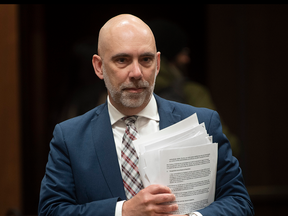The article discusses the current state of the Canadian labor market, where there is a significant shortage of skilled workers. Bank of Canada Governor Tiff Macklem has warned that the labor market needs to slow down in order to cool down inflation and give supply a chance to catch up. He has called on politicians and employers to boost the supply of skilled labor.
Macklem’s comments have been met with criticism from some economists, who argue that the demographic structural labor shortage narrative has been overplayed. They point out that many job vacancies exist in industries where fewer skills are required, and that immigration is an effective way to dampen nominal wage growth.
However, others agree with Macklem that the labor market needs to slow down in order to cool down inflation. A report by the Royal Bank of Canada’s economics team found that international students are a key pillar to Canada’s immigration strategy during a structural demographic squeeze.
The article also mentions that former Bank of Canada governor Stephen Poloz identified the risk the aging baby boomer generation could pose to global growth in his book The Next Age of Uncertainty. Poloz warned that even if better health and longer lifespans mean people remain in the workforce longer than in the past, the next 10 to 20 years will still see a significant slowdown in global labor force growth.
Overall, the article suggests that the Canadian labor market is facing a complex set of challenges, including demographic changes and economic pressures. Macklem’s call for politicians and employers to boost the supply of skilled labor may be seen as a necessary step towards addressing these challenges.
Here are some key points from the article:
- The Canadian labor market is experiencing a significant shortage of skilled workers.
- Bank of Canada Governor Tiff Macklem has warned that the labor market needs to slow down in order to cool down inflation and give supply a chance to catch up.
- Macklem has called on politicians and employers to boost the supply of skilled labor.
- Some economists have criticized the demographic structural labor shortage narrative, arguing that it has been overplayed.
- Immigration is seen as an effective way to dampen nominal wage growth.
- The aging baby boomer generation is expected to pose a significant challenge to global growth in the next 10 to 20 years.


























